|
In memory of Billy Williams (1929-2025)
A Midlands mining town, circa 1920. Sisters Gudrun (Glenda Jackson) and Ursula Brangwen (Jennie Linden) attend a local wedding. There they meet two men – the bride’s brother Gerald Crich (Oliver Reed), whom Gudrun becomes fascinated by, likewise Ursula with Gerald’s friend Rupert Birkin (Alan Bates).
Women in Love, released in 1969, was Ken Russell’s third feature film for the cinema and a turning point in his career. Many people would regard it as one of his best. His two earlier films were French Dressing (1964), which was a box office failure and an unhappy experience for Russell, and Billion Dollar Brain (1967), the third film in which Michael Caine played Harry Palmer, and likewise not well received by critics and audiences at the time. However, he had been making films for the BBC since 1959. Some of his films (shot on film, 16mm or 35mm) for the small screen rank amongst his greatest work. (Six of them can be found on two BFI Blu-ray sets: The Great Composers – Elgar (1962), The Debussy Film (1965) and Song of Summer (1968) – and The Great Passions – Always on Sunday (1965), Isadora (1966) and Dante’s Inferno (1967).) The BBC clearly knew Russell’s worth, granting him a retrospective in 1968, repeating some of the above and others. However as his work became more ambitious – and longer, reaching feature-length – Russell began to chafe at the restrictions he felt at the Corporation. He had to work on tiny budgets, much less than was available for feature films. He had wanted to make Dante’s Inferno – about Dante Gabriel Rossetti (played by Oliver Reed) – in colour, but wasn’t able to due to BBC1 only broadcasting in black and white at the time, even though BBC2 had begun its colour service earlier the same year. Also, he was frustrated that his work was shown only once or maybe twice in normal circumstances, with no means for the vast majority of the population to record them, and then to vanish into the archives afterwards. (As film productions, fortunately they didn’t become lost.) So with the success of Women in Love, resulting in Russell’s first and only Oscar nomination as Best Director, it was clear his days at the BBC were numbered. The tipping point was the furore over Dance of the Seven Veils, his film about Richard Strauss, broadcast once only in 1970. Russell took personally what he felt to be the BBC’s lack of support (questions asked in Parliament, Strauss’s estate refusing to license the music so preventing any legal further showings for the lifetime of the composer’s copyright) that he didn’t work again for television for another eight years and not for the BBC at all until his four-part adaptation of D.H. Lawrence’s Lady Chatterley’s Lover in 1994. Fortunately for him, his cinema career was taking off.
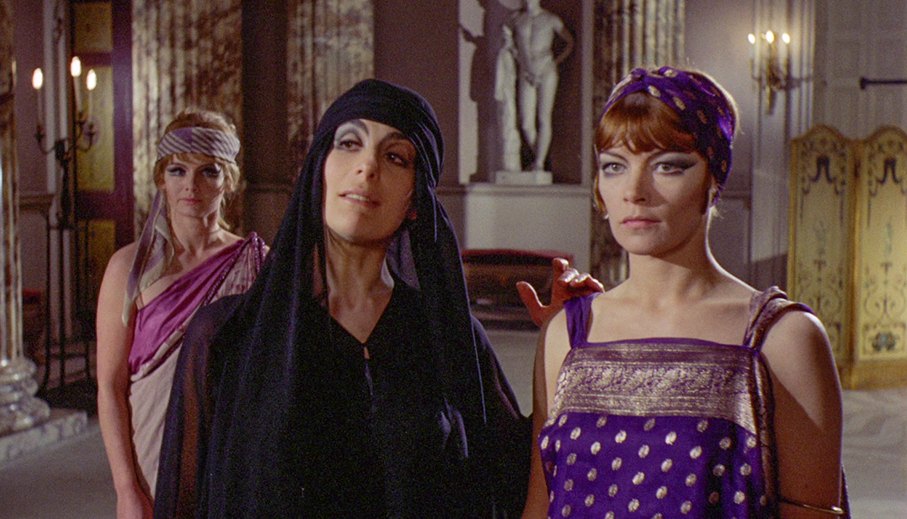
Women in Love does in some ways hark back to Russell’s television work, although it’s in colour (with masterly cinematography from Billy Williams), and some of its content went beyond what was allowed at the time on the small screen. Compared to what Russell made later, it’s quite restrained without too many of the visual fantasias he could unleash, and has “respectable” roots in that it’s based on a classic twentieth-century novel. It’s often the case that this film (and Russell’s best television work, such as Song of Summer, based on Eric Fenby’s friendship with the composer Frederick Delius) finds favour among those who find the perceived excesses of Russell’s 1970s work hard to take. That’s even though many of them are also literary adaptations (The Devils, from John Whiting’s play and Aldous Huxley’s “non-fiction novel” The Devils of Loudun) or biopics of sorts of composers or artists (The Music Lovers, Savage Messiah, Mahler, Lisztomania). Russell, along with near-contemporaries Nicolas Roeg (a year younger) and John Boorman (six years younger), stands for a non-realist strain in British cinema, far removed from social realism, parochial or otherwise, and all of them worked widely, sometimes internationally, in the 1970s. Given that he returned to his work more than once, Russell clearly saw a kindred spirit in D.H. Lawrence.
The novel was Lawrence’s fifth. It was a sequel to The Rainbow, which covered the earlier years of the Brangwen sisters. That novel had been first published in 1915 but had been successfully prosecuted for obscenity, making it unavailable in Britain until 1926. Women in Love was published in 1920. Lawrence is unspecific as to the time setting (he wrote it in the late 1910s), but the film adaptation (screenplay by Larry Kramer, though Russell rewrote it uncredited) sets the story in 1920, with references to the war that had recently concluded. The film streamlines what is quite a long novel (which I haven’t read) though much of the dialogue we hear is Lawrence’s. Rupert Birkin is in many ways Lawrence’s stand-in in the novel, and with a beard Alan Bates resembles him.
Kramer was an American, in London since 1961 as a story editor for Columbia and then an assistant at United Artists. He optioned the novel and, after a script by David Mercer which didn’t find favour, wrote the screenplay himself. As well as Lawrence’s own words in the novel, he also drew on the writer’s letters, poems and other writings. Although Billion Dollar Brain had not done well critically and commercially, the powers that were at United Artists thought that Russell would do better with more sympathetic subject matter, and so he came on board. A difficulty with the casting was that Jennie Linden (the last of the four principals to be cast) had just had a baby and that Glenda Jackson became pregnant during shooting, so her costumes had to be altered to disguise the fact that she was beginning to show. The film was shot in late 1968, largely in sequence, on locations in the Midlands and North of England and Zermatt, Switzerland.
However, the next obstacle was that of censorship. The late 1960s was a time of greater permissiveness in cinema, with the breakdown of the US Production Code (in force since 1934) and its replacement with a ratings system in 1967. In 1969, the highest certificate available from the British Board of Film Censors (as was) was X, which then restricted audiences to those aged sixteen and over. Women in Love was passed by the BBFC at X on 17 July 1969, but the film caused the Board problems. Jackson and Linden’s occasional topless nudity was not an issue: that had featured in commercial films since The Pawnbroker, which the BBFC had passed uncut in 1965. However, what hadn’t been seen in a commercial film before was full-frontal male nudity, specifically the scene where Rupert and Gerald wrestle naked in front of a roaring fire. The BBFC had cut shots revealing male genitalia from if…. in 1968 though brief glimpses remain (even more so if you see the film open-matte from its intended ratio of 1.75:1, for those who like to know these things). Russell maintained the scene was vital to the film, as it is, though the BBFC and its secretary John Trevelyan had concerns that it showed homosexual feelings between the two men which had already been hinted at. However, Russell and Trevelyan reached a compromise and the scene was darkened slightly but not cut and so Bates and Reed became the first men to perform full-frontal nude scenes in a commercial film, around the same time that Robert Forster did, more fleetingly, across the Atlantic in Medium Cool. Trevelyan said in his memoir What the Censor Saw (1973) that he recognised the quality of Women in Love and did not cut it, but that’s not actually the case: two sex scenes were edited, and the version released to British cinemas is the version available to this day.
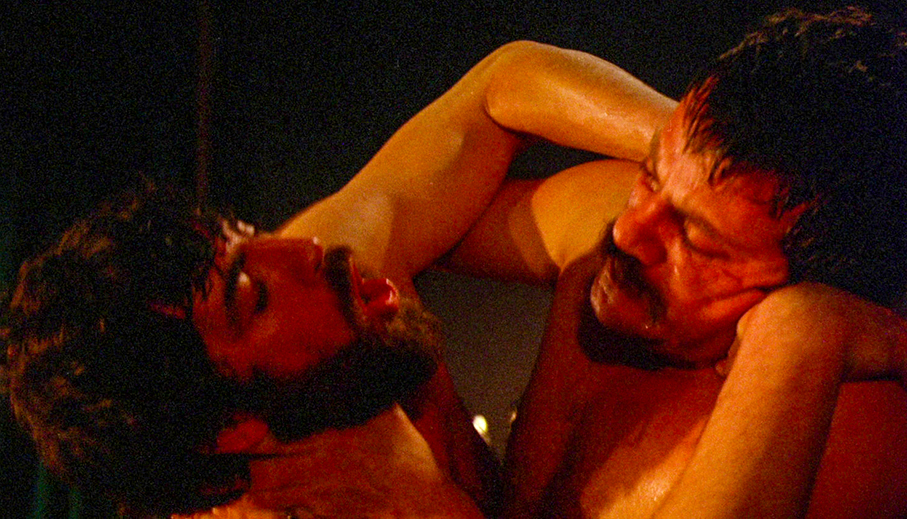
Russell is a very visual rather than verbal artist and, despite the extensive dialogue lifted from Lawrence elucidating his and the film’s themes, what you take away from the film are visual scenes: Gudrun’s dance amongst the cows and the previously mentioned wrestling scene, to name but two. However, Russell could get the best out of his actors, and as well as Bates, Reed, Jackson and Linden, there is fine work from Eleanor Bron as the pretentious Hermione Roddice, and Vladek Sheybal is effectively slimy in the later stages as Loerke. Behind the camera, there are fine contributions from Billy Williams as already mentioned, Russell’s then wife Shirley as costume designer, his regular editor Michael Bradsell and Georges Delerue as score composer. (Russell had made a documentary on Delerue, Don’t Shoot the Composer, for the BBC in 1966, having worked with him on French Dressing.)
Women in Love was released in the UK on 13 November 1969 and in the USA on 25 March 1970. It earned four Oscar nominations: Best Director, Best Adapted Screenplay, Best Cinematography and Best Actress, which Jackson won. Russell returned to Lawrence with his 1989 film of The Rainbow, with Sammi Davis playing Ursula and Glenda Jackson playing her mother.
Women in Love was released on Blu-ray by the BFI in 2016, based on the BFI National Archive’s 4K restoration from the original negative. It now has an upgrade to UHD. As mentioned above, the film was cut for an X certificate in 1969 but is now a 15. Second Best presumably was certified for the 2016 release but that information is currently missing from the BBFC database. Over to Slarek for the picture and sound in this new release.
To quote the accompanying booklet:
The 2025 4K HDR remaster of Women in Love was created from a new 4K scan of the original 35mm negative by Illuminate Hollywood. Colour grading, supervised in 2015 by the film’s director of photography Billy Williams using a Technicolor print as reference, formed the basis for the new 2025 HDR grading at Silver Salt Restoration.
The BFI really has been hitting home runs with its 4K UHD releases of late, and this new remaster of Women in Love is up there with the best of them. This is a beautiful restoration and transfer and a testament to the subtle richness of Billy Williams’ handsome 35mm cinematography, with detail that is crisply defined without a trace of digital enhancement, and a colour palette that really flatters the pastel shades of costumes of the female leads, allowing them to really pop against the dark coats and hats of background characters during crowd scenes. The strong colours are gorgeously rendered, from the coloured lantern on Rupert and Ursula’s boat at night to the golden glow of the fireplace lighting in the famed nude wrestling scene. The contrast is also impeccably graded, with the use of Dolby Vision HDR bringing out the shadow detail in darker sequences and avoiding blow-out on the snow when our charters journey to the Alps. A fine film grain is evident throughout, dust and dirt have both been eliminated, and the image sits rock solidly in frame. Framed in what we are assured is the original aspect ratio of 1.75:1, this is an absolutely top-notch job all round. Due to technical restrictions, the screen grabs here are from the BFI Blu-ray.
Also to quote the booklet:
Audio was digitised in 2015 by Chace Audio from the original magnetic and optical sources and is presented in the original mono.
Presented in Linear PCM 1.0 mono, the soundtrack is clear and free of obvious signs of wear or damage, and boasts a decent tonal range for a mono film of the period, something particularly evident in the music, dialogue and ambient sound.
Optional English subtitles for the hearing impaired are available.
This UHD release carries over all of the on-disc extras from the BFI’s 2016 Blu-ray, other than an isolated score. It adds three new extras, reviewed here by Slarek. The other extras are reviewed by Gary Couzens.
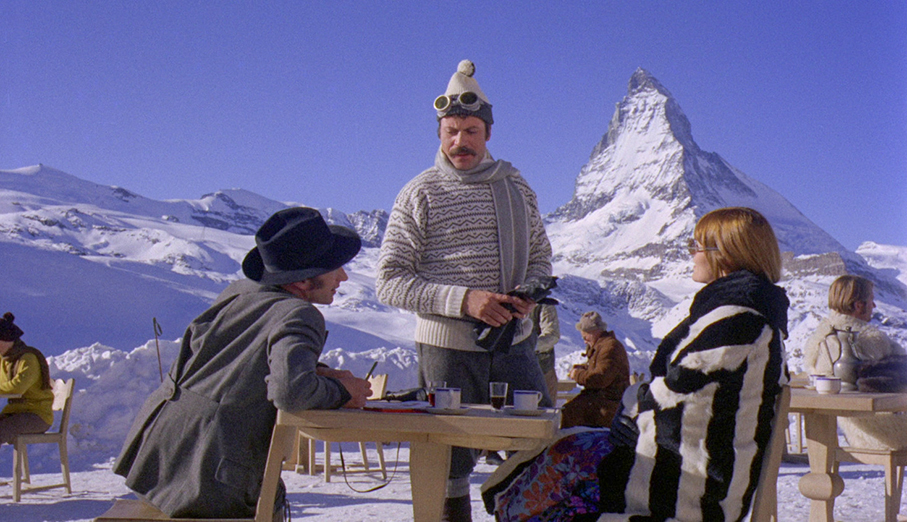
Human Relations: Alexander Verney-Elliott Discusses Women in Love (17:32)
Ken Russell’s son Alexander Verney-Elliot recalls how their family life revolved around the making of Women in Love (which included him working as an extra in three scenes), and that his father was far more comfortable with the material here than with his previous feature, the Len Deighton spy thriller Billion Dollar Brain. He cites Russell’s annoyance that producer Larry Kramer was the credited screenwriter when he did only about five per cent of the writing, remembers Russell and his then wife Shirley Russell (the film’s costume designer) picking holes in every scene when they watched the film as a family in 1975, and has some perceptive observations about the famed nude wrestling scene and why his father worked so well with actors. He concludes that it’s probably Russell best film but admits it’s up against some stiff competition.
A British Picture: Portrait of an English Enfant Terrible (50:42)
Commissioned by Melvyn Bragg in 1989, for whom Russell had directed three episodes of the acclaimed London Weekend Television arts series The South Bank Show, this autobiographical film by Russell, also for LWT, is rather wonderfully summed up by the introductory text on this disc, which describes it thus: Russell’s charmingly idiosyncratic, micro-budget self-portrait is an effervescent and thoroughly entertaining whistle-stop tour through the career highs and lows of the reluctant ‘Enfant Terrible’. I’ve no quibbles with that and can’t really top it as a concise summing up of this highly engaging and enjoyably idiosyncratic documentary. Having his then young son Rupert play the director at all ages until a modern day switch gives the whole thing a playful air from the off and frees Russell to cheerfully overplay a series of authority figures against whom he rebelled in his in sometimes unexpected ways in his younger days. You can read what you like into the lightning-fast skip through the films for which he is now most celebrated, with some key titles not even getting a mention, but Russell clearly saw this as an opportunity to make a personal memoir, and it’s in this aspect that the film that really shines. There are plenty of film extracts and amusing re-enactments, but while Russell does explore his stated mantra that art has no frontiers, we’re left with the impression that he really found contentment though his family and their beloved Lake District home.
ATV Today: Women in Love (10:14)
A TV news report from the set of Women in Love as the crew and cast prepare to shoot the military funeral scene, with Barri Haynes interviewing producer and credited screenwriter Larry Kramer and actors Alan Bates and Jennie Linden. Kramer outlines the difference between a producer and a director and talks about the importance of remaining faithful to the novel, Bates reflects on returning to his home county of Derbyshire, and Linden reveals why she returned to screen acting for this film after the birth of her child, and praises the free reign that Russell gives to his actors and the productive challenges that he sets them. The footage of the shoot is valuable, if not that revealing, as it mostly consists of shots of the cat and crew standing around waiting to film or involved in discussions that we cannot hear, though a shot of a wine bottle shoved into Russell’s jacket pocket that tilts down to reveal and empty glass in his hand tells its own small story. Although the splices between edits are very visible and prompt the occasional small picture jitter, the image quality is otherwise excellent.
Commentary by Ken Russell
This commentary was recorded in 2003 for a US DVD release. At first, Russell seems content to describe what’s on screen, though that includes talk about the film’s locations, which in an early scene cuts from one shot to the next from Derby to Newcastle. He does talk a lot about the contributions of the cast and crew, including his then wife, referring to her as Shirley Kingdon rather than the as-billed Shirley Russell. Inevitably the wrestling scene attracts a lot of comment, as he tells a couple of well-known anecdotes about it. He had a scene with the Brangwen sisters rehearsed and ready to go in case Reed and Bates didn’t turn up for the scene, but they did. During the scenes shot in Switzerland at an altitude of 10,000 feet, he and operator David Harcourt sometimes fainted for lack of oxygen. Towards the end of the film, he talks about Oliver Reed’s death. Sometimes his memory is at fault – at one point he says he made the film in 1965 and, when Hermione Roddice’s Isadora Duncan-inspired dance is on screen, wonders if he had made his BBC film Isadora by then. (He had.)
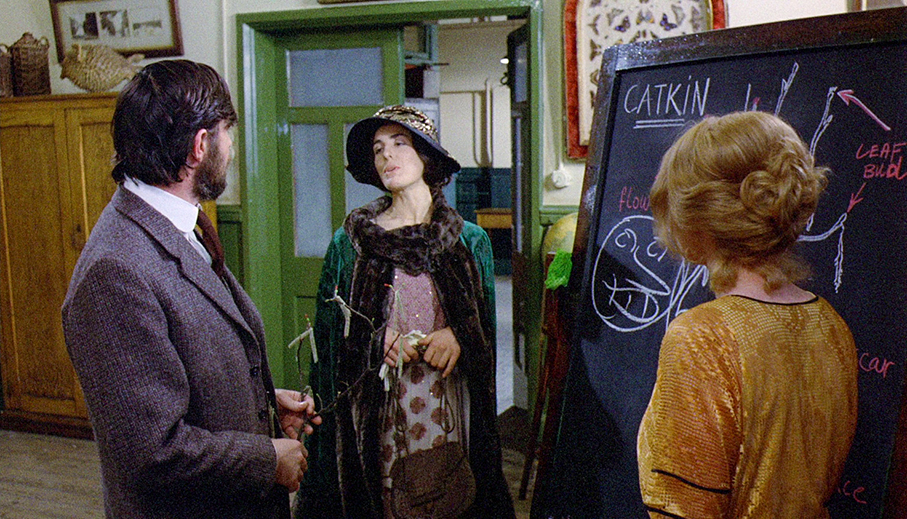
Commentary by Larry Kramer
Also recorded in 2003 for that US DVD, producer and screenwriter Kramer also has a tendency to describe what’s on screen, but there is useful information to be had. One elephant in the room is not addressed; that what appeared in cinemas and here on disc was rewritten by Russell from Kramer’s script and Russell wanted and wasn’t given screen credit for it. As a gay man (closeted at the time, later an AIDS activist, with plays like A Normal Heart from 1985), he has interesting things to say about the homoeroticism in the original novel (between Rupert and Gerald, a definite subtext in the wrestling scene) and Lawrence’s work especially, and he wonders how his own sexuality informed his adaptation of the novel by a possibly bisexual writer. He reveals that directors considered before Russell included Silvio Narizzano (who had brought the novel to Kramer’s attention), Peter Brook, Jack Clayton and even Stanley Kubrick. Klaus Kinski was approached to play Loerke, but wanted too much money, so Vladek Sheybal was cast. Kramer does make a few errors, likely from misremembering. The then BBFC Secretary was not “Lord” Trevelyan (the most he was honoured with was a CBE) and British film censorship was not abolished soon after – maybe he was thinking of stage censorship, as the Lord Chamberlain’s powers were removed in 1968.
As with the Russell commentary, and the Glenda Jackson items below, this is worthwhile simply to allow us to hear the words of principals no longer with us. However, I’d suggest one commentary would have been enough – either with the two men together, or edited from their contributions if they couldn’t or wouldn’t be in the same room at the same time.
The Guardian Lecture: Glenda Jackson (76:37)
This interview took place at the National Film Theatre on 9 May 1982, which happened to be Glenda Jackson’s birthday. As the interviewer (male, unidentified on the disc) says, Jackson was at this time very busy: on the London stage as Eva Braun in Summit Conference and having made the Film on Four Giro City and with The Return of the Soldier about to premiere at Cannes. The interview begins with the well-known story that Jackson was working in Boots when she applied to RADA. She was accepted and after two years began to work in repertory theatre. She was advised she might not get much work before the age of forty as she was a character actress, and she had the impression that most roles for women went to those who were blonde, pretty and from the Home Counties, none of which she was. She talks about some of the stage and film directors who had an impact on her career: Peter Brook, who cast her in his groundbreaking production of Peter Weiss’s The Marat/Sade. The film version from 1967 was her credited big-screen debut. Ken Russell saw her in the play.
This interview (called a Guardian Lecture, as they were sponsored by that newspaper) doesn’t follow the usual form, as after eight minutes it’s opened up to questions, and you can hear most of them, which is not always the case in these archive audio recordings. Jackson says that she doesn’t like television, or at least not studio-based drama, though she had spent seven months playing Queen Elizabeth in Elizabeth R. on the small screen. Some of her films she does talk more about, particularly Women in Love. She reveals that she turned down the role Vanessa Redgrave played in The Devils as after The Music Lovers she didn’t want to play another mad nymphomaniac, even in a wimple. Russell didn’t take this very well, and her cameo in The Boy Friend was to make up for it. Other films she talks more about include Stevie (1978), having met the real Stevie Smith in the 1960s, the then-recent TV movie The Patricia Neal Story and Robert Altman’s HealtH, which she wonders might get a release in the UK soon – it didn’t. As usual, extracts from films shown are edited out from this recording, so we don’t hear from A Touch of Class (the interviewer apologises for its being a 16mm Scope print, all the NFT could get hold of), Stevie and, in a pre-Cannes sneak preview, The Return of the Soldier.
Billy Williams OBE in Conversation with Phil Meheux BSC (49:17)
Recorded at the Regent Street Cinema, London, in 2015, Billy Williams is interviewed on stage by another cinematographer, Phil Méheux. Williams didn’t follow the traditional path within the film industry from tea boy to clapper loader, camera operator and then cinematographer (as for example Nicolas Roeg, a year older, did), but broke in via documentaries and then commercials, similar to his near-contemporaries David Watkin and Robert Paynter. After leaving school, he worked for his father (also a cameraman called Billy Williams) for four years before becoming a photographer in the RAF, then taking a job with British Transport Films. It was due to making a commercial that he met Ken Russell. Because of that, Russell despite some resistance hired him for Billion Dollar Brain (1967), after Otto Heller, then just turned seventy and having shot the two previous Harry Palmer films, refused to undergo a medical. That was Williams’s second feature, following Just Like a Woman (1967) – or third, if you count the 52-minute San Ferry Ann (1965). While he was Oscar-nominated for Women in Love, there’s no mention of the films he was also nominated for; On Golden Pond (1981) and Gandhi (1982). He won for the latter, jointly with Ronnie Taylor.
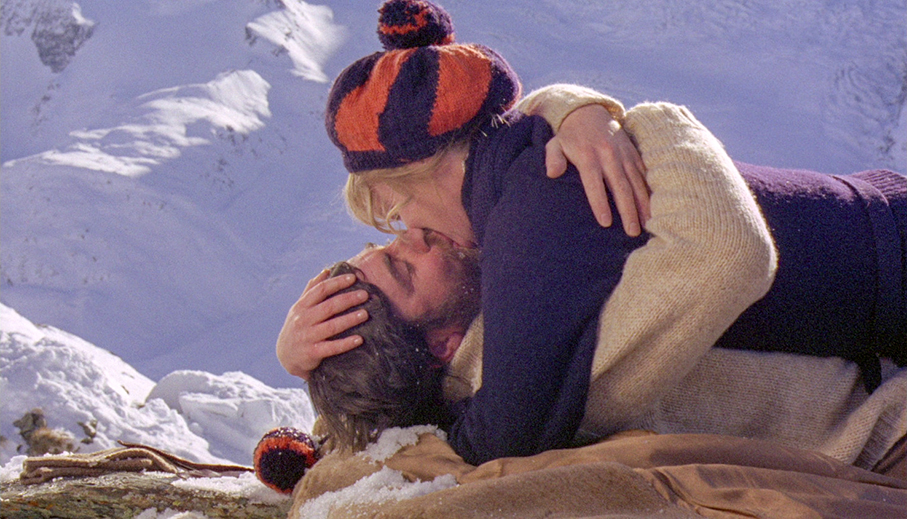
Given that this was an event of the British Society of Cinematographers, the audience was likely mostly film industry professionals, likely including other cinematographers and camera crew. What W50illiams and Méheux discuss may be a little technical for some: the use of hard and soft light, the finer grain of contemporary film stocks and the sharper lenses, sometimes too sharp. He also talks about his brief acting role in The Wind and the Lion (1975), which he shot for director John Milius. He discusses Women in Love and reveals that Russell wanted to shoot it in Scope, as they had for Billion Dollar Brain. The budget didn’t allow for it, so it ended up in a ratio of 1.75:1, the then most common non-Scope ratio in the UK, a halfway house between the 1.66:1 used in many European countries and the 1.85:1 which was standard in the USA. (An audience question from the son of the film’s camera operator David Harcourt prompts Williams to say that the film’s use of handheld cameras would have been more difficult in Scope, as anamorphic lenses are heavier than spherical ones.) Williams also talks about how he was given a non-fading dye-transfer 35mm print of Women in Love from the BBC, which he eventually passed on to the BFI National Archive. It was used as a reference for the present digital restoration from the original Eastmancolour negative, which Williams supervised.
The Pacemakers: Glenda Jackson (14:19)
The Pacemakers was a series of documentaries made by the Central Office of Information for distribution abroad. This edition, from 1971, profiles Glenda Jackson. She talks to camera about her career, including her beginnings in rep and her current preference for the screen rather than the stage. We see her doing post-production work on Women in Love (presumably shot about two years earlier) and doing rehearsals on set for Sunday, Bloody Sunday, which she calls Bloody Sunday, maybe its then working title. That film was also shot by Billy Williams. I don’t think I saw him in the footage, but you can certainly see director John Schlesinger.
Second Best(26:31)
This adaptation of D.H. Lawrence’s short story was made in 1972. It had its origin because Alan Bates’s then wife Victoria Ward said that acting was “no big deal”. So he produced this short film and gave her the lead role and himself in the one male role of the cast of three. Fran (Ward) has returned to Derbyshire after the breakup of a relationship. Her friend Anne (Annette Widdowson) kills a mole and presents it to labourer Tom (Bates), and Fran is compelled to do the same, in a strange kind of mating ritual... The story was adapted by Stephen (billed as Steven) Dartnell, who had been a friend of Bates from RADA days, and the film was shot in 16mm, making it intensely grainy in this transfer. The film showed at the 1972 London film festival (playing in support to Marguerite Duras’s Nathalie Grainger, and may have had a showing on Dutch television, but it didn’t have a commercial release until the BFI’s 2016 Blu-ray of Women in Love.
Stills and collections gallery (3:21)
A self-navigating gallery, backed with at first “I’m Forever Blowing Bubbles” and then an extract from Georges Delerue’s score, changing over when the last colour still is on screen. So we have a selection of stills (colour and black and white), poster designs (including one for a double bill of Women in Love with Claude Lelouch’s foreign-language-hit-of-its-day A Man and a Woman) and ad mats.
Theatrical trailer(3:31)
This trailer might not have been the original version, as it contains several quotes from UK newspapers. It’s very much pushing the film’s quality and prestigious sort, so none of that nudity lark to frighten a few horses.
Booklet (Reviewed by Slarek)
The lead essay here is by Matthew Melia, who is senior lecturer in film, media and English literature at Kingston University, has published widely on the work of Ken Russell, Stanley Kubrick and other areas of British Cinema, and is editor of Refocus: The Films of Ken Russell. Here he explores the creatively fortuitous pairing of Lawrence and Russell, praises Oliver Reed’s performance as Gerald Crich, and discusses the critical response to the film, the Derbyshire locations, the film’s faithful treatment of the novel, and more. A compelling read, though I should point out that the Russel directed Billion Dollar Brain (1967) was the third instalment in the Harry Palmer trilogy, not the second and stated here (that was the 1966 Funeral in Berlin).
Senior curator of Special Collections at the BFI National Archive, Claire Smith, examines Shirley Russell’s costume designs for Women in Love and her dedication to authenticity on this score. Some of Russell’s design sketches have been included – this is particularly welcome given that they are specifically referenced in the text. As someone who knows precious little about fashion or costume design, I found this intriguing.
The insanely busy writer and reviewer Michael Brooke looks at the development and filming of Women in Love. He quotes from John Baxter’s excellent but now frustratingly unavailable biography of Russell, An Appalling Talent, and progressive BBFC chief censor John Trevelyan’s memoir What the Censor Saw, and examines the film in relation to the increasingly liberal mood of the era. Another essential read.
Full credits (except for running time, year and country of production) are included, as ever, as are the main credits and a brief summary for all of the special features, with film archivist and historian Vic Pratt giving special attention to Second Best. Also provided are details of the 4K HDR restoration, which are cited above.
In Ken Russell’s large and often wayward filmography, Women in Love has always had a place near the top. For some, you could say it’s a Russell film for those who don’t like Russell films. (You’d need to prepare yourself for sitting through The Devils, say.) It features a major role for Glenda Jackson in particular, winning her the first of her two Oscars. There’s no doubt that the BFI’s release showcases the film very well. It did on the earlier Blu-ray release and it does again in UHD.
|